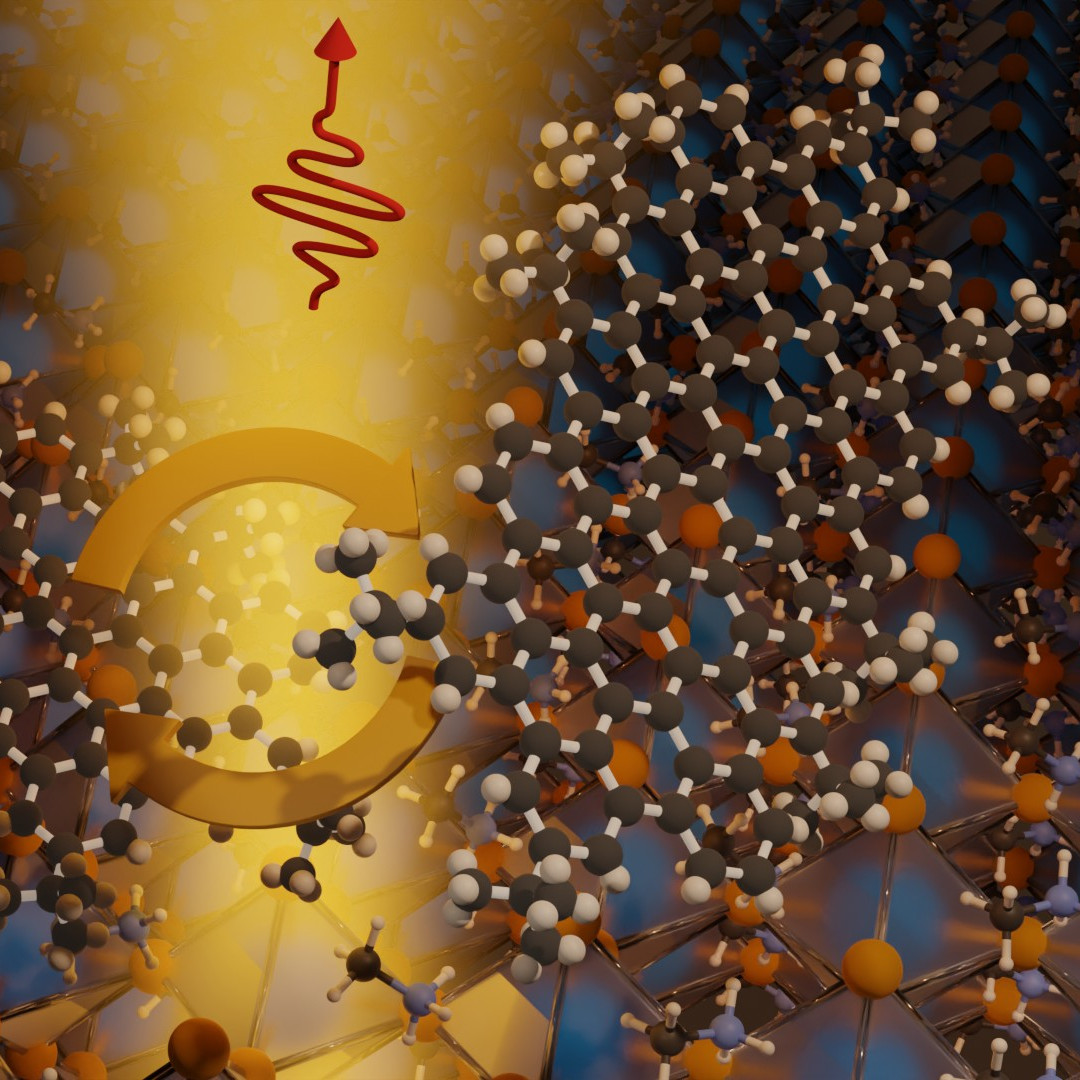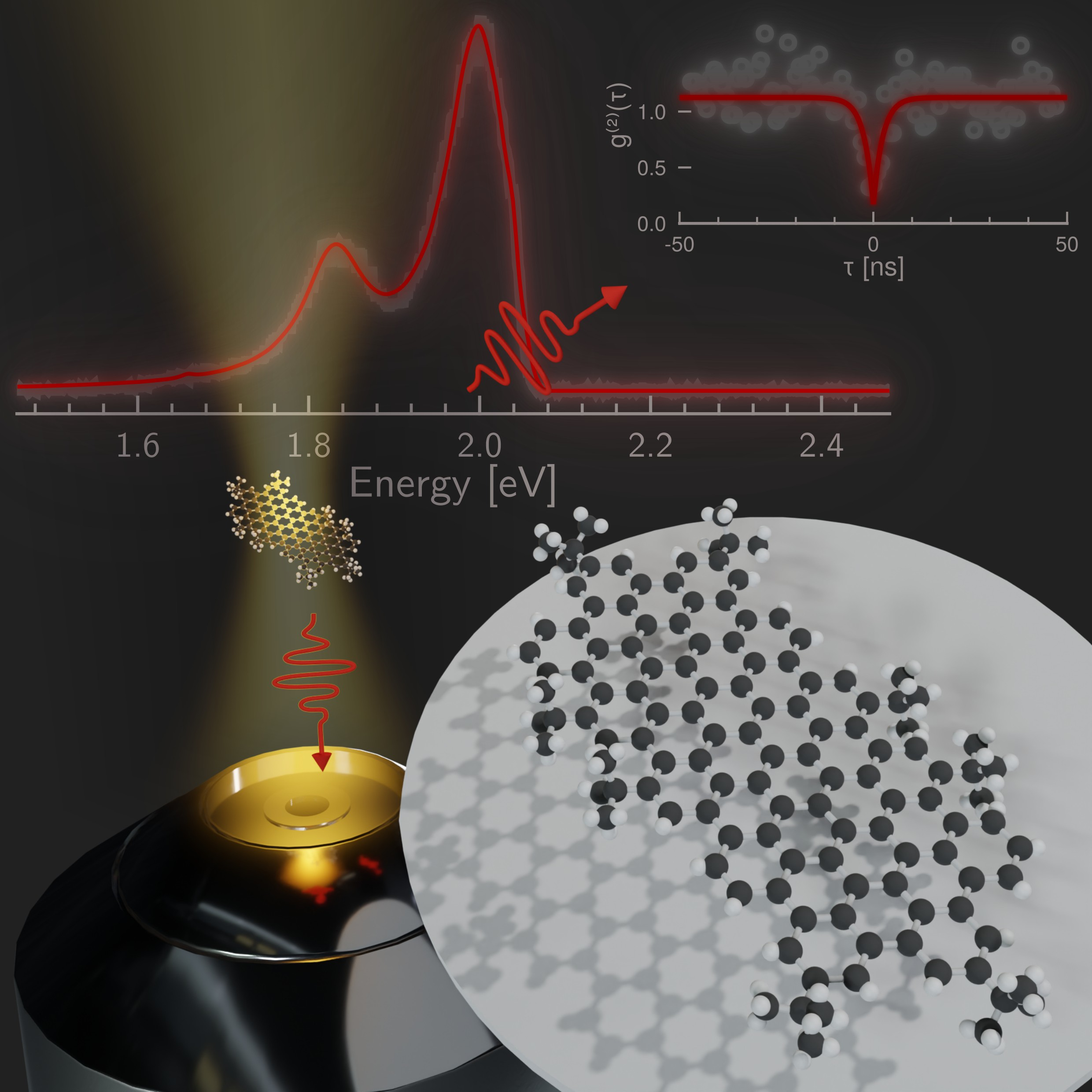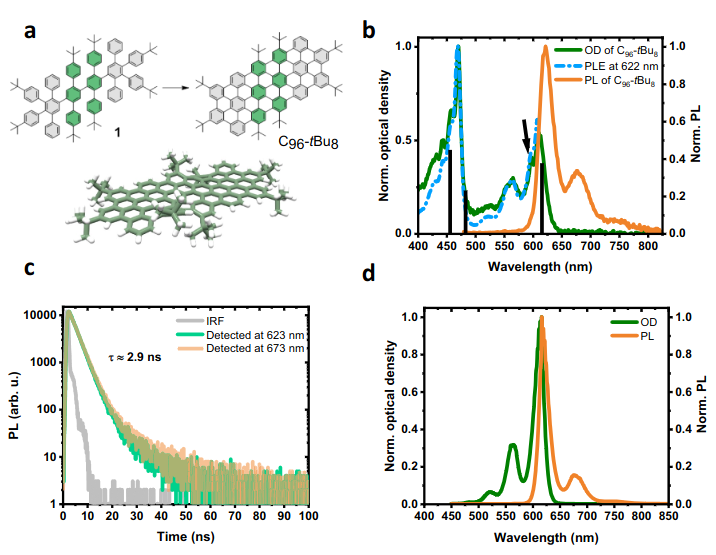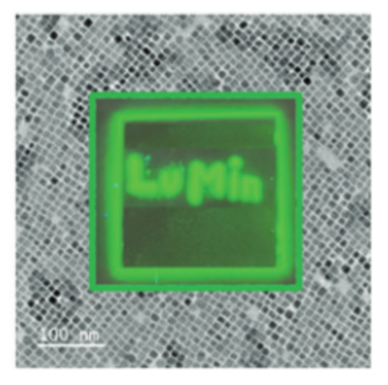Optical spectroscopy of graphene quantum dots and halide perovskite nanocrystals
I defended my thesis, the manuscript is available on HAL.
This work focuses on the optical spectroscopy of two classes of materials using fluorescence microscopy at room temperature.First, halide perovskites, a class of semiconductors that have known a surge in interest in the last ten years because of their outstanding optoelectronic properties, making them a promising platform for photovoltaic applications, but also light emission in diodes, lasers, and quantum devices. These crystalline materials consist of corner-sharing octahedra with a metallic ion at the center, often lead, and halide ions at the corners: Cl, Br, or I. A cation completes the structure. It is either organic, for example, methylammonium (MA) or formamidinium, or inorganic, for example, cesium. In the context of light emission, halide perovskites are an excellent choice to address the problem of the green gap, that is, the lack of efficient emitters in the green region of the optical spectrum, because of the possibility to tune their band gap thanks to an informed choice of the halide during the synthesis.Moreover, because the synthesis is done at room temperature and involves soft chemistry steps, they are promising for industrial applications. The synthesis and characterization of CsPbBr₃ nanocrystals emitting in the optical spectrum's green region using a new reprecipitation-based method is reported. In particular, the nanocrystals' high calibration and good stability are highlighted.The second part of this study is about graphene quantum dots. Those low-dimensional objects allow the opening of the band gap of graphene, making them fluorescent. These emitters are promising because their atomically-thin structure and tunability make them suitable for realizing nano-sensors. Building on the recently studied structure-properties relationship of rod-shaped graphene quantum dots, a thorough single-molecule study of highly fluorescent graphene quantum dots with 96 sp2 carbon atoms is reported. The excellent purity of the samples was highlighted. The study of the time dynamics of those single-photon emitters in a polystyrene matrix allowed estimating the characteristic times of the transient dynamic of the quantum dots. Finally, the third part reports the study of the graphene quantum dots on a perovskite surface. The surface of perovskites is of peculiar interest for the realization of devices with these semiconductors, making it an interesting playground to use graphene quantum dots. To that end, the quantum dots were deposited on a millimetric MAPbBr3 single-crystal surface.
- As thin films deposited on the perovskite, the graphene quantum dots present photophysics compatible with the formation of excimers.
- As the concentration of quantum dots on the surface is lowered, diffraction-limited spots are observed. The time-domain study of the photoluminescence reveals jumps between discrete states of the system.
- The frequency-domain investigation of the intensity of photoluminescence of these diffraction-limited emitters is dominated by 1/f noise, which highly contrasts the stable, shot-noise-dominated dynamics of the single emitters when studied in a polystyrene matrix.
Investigation of Rod-Shaped Single-Graphene Quantum Dot
Physica Status Solidi (b)
In recent years, there has been a resurgence of interest in graphene quantum dots (i.e., large polycyclic aromatic hydrocarbons) in particular due to their interesting properties as single-quantum emitters. Herein, a thorough study of a graphene quantum dot made of 96 carbon atoms in a D2h symmetry is reported. In particular, experiments at the single-molecule level reveal that this graphene quantum dot structure is a bright and photostable single-photon emitter at room temperature. Finally, a statistical study of the emission wavelength as a function of the graphene quantum dot concentration highlights the high purity and degree of control on the samples.
Nature Communications
Nanographene materials are promising building blocks for the growing field of low-dimensional materials for optics, electronics and biophotonics applications. In particular, bottom-up synthesized 0D graphene quantum dots show great potential as single quantum emitters. To fully exploit their exciting properties, the graphene quantum dots must be of high purity; the key parameter for efficient purification being the solubility of the starting materials. Here, we report the synthesis of a family of highly soluble and easily processable rod-shaped graphene quantum dots with fluorescence quantum yields up to 94%. This is uncommon for a red emission. The high solubility is directly related to the design of the structure, allowing for an accurate description of the photophysical properties of the graphene quantum dots both in solution and at the single molecule level. These photophysical properties were fully predicted by quantum-chemical calculations.
Synthesis method of highly calibrated CsPbBr3 nanocrystals perovskites by soft chemistry
Chemical Communications (Royal Society of Chemistry)
A new synthesis method of highly calibrated CsPbBr3 nanocrystals perovskites is described and analyzed using High-Resolution Scanning Transmission Electron Microscopy. This new method based on soft chemistry leads to the large-scale production of nanocrystals. Such monodisperse nanocrystals allow for the deposition of homogeneous films which provides new opportunities for the next generation of optoelectronic devices.



